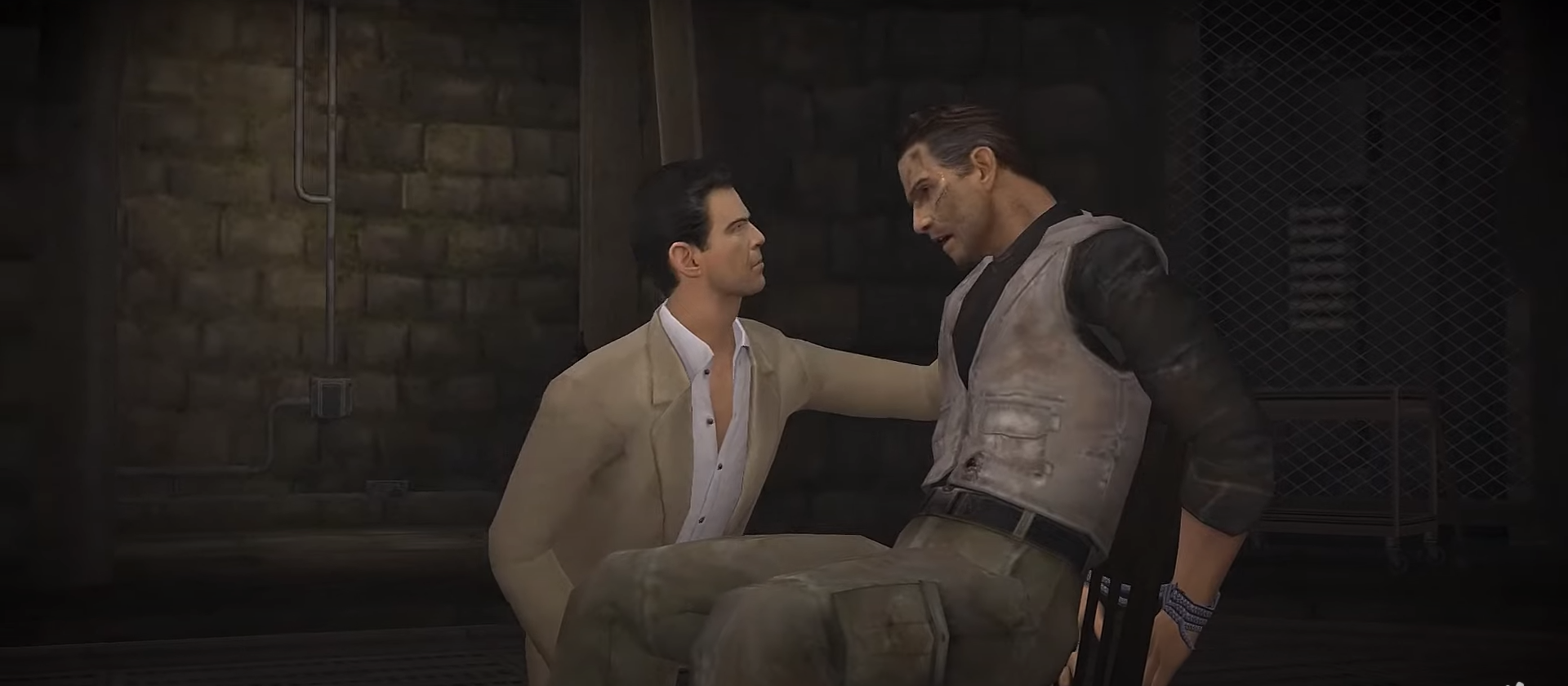
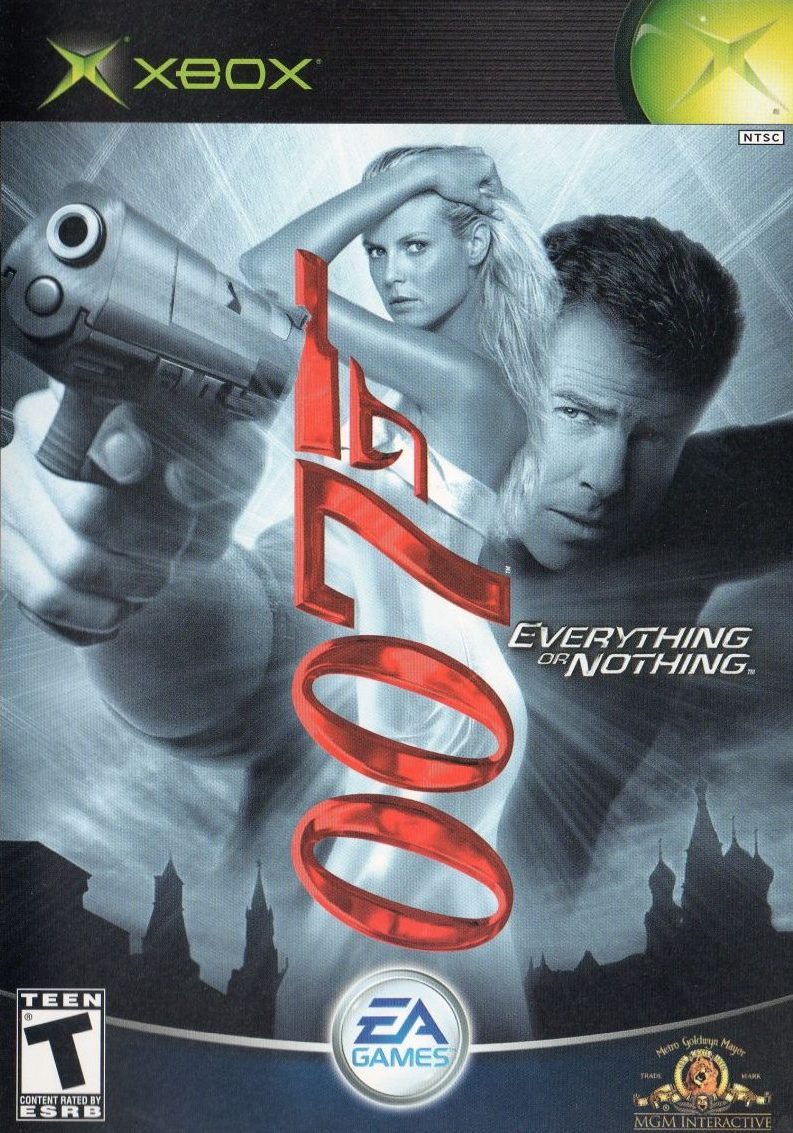
“Sometimes, I think that MI6 assigns your numbers based on the level of your I.Q.”
Pierce Brosnan began his tenure as the virtual James Bond with GoldenEye, a game so beloved and critically regarded that the corresponding film is fondly remembered as better than it actually is. Following this, his likeness was leant to four additional James Bond video games in seven years. Even if we leave out the Brosnan-less Agent Under Fire, which kicked off the game series’ brief golden era in the middle of the actor’s four-film stretch as the suave secret agent, his stint as 007 undoubtedly produced the best run in the game franchise to date. But which is the definitive Bond gaming experience?
I would never argue against the importance of GoldenEye for the FPS genre, home consoles, and the medium as a whole. But it is the definitive late-90s couch multiplayer shooter, the breakthrough console FPS—a different achievement than making the player feel like their favorite British spy.
After the success of the Rare-produced megahit, EA came out on top in a bidding war for the rights to produce more Bond games. They promptly pumped out a stinker, Tomorrow Never Dies, before partially redeeming themselves by utilizing the if-it-ain’t-broke approach with The World Is Not Enough. The move to sixth-generation consoles began with Agent Under Fire, featuring a short, wild campaign and AI bots in multiplayer. This was followed by Nightfire, which is maybe the only legitimate contender to dethrone GoldenEye as the best multiplayer Bond game.
Perhaps you see a trend emerging—which is that the best Bond games are generally considered as such because they have strong multiplayer modes. But, consider for a moment that James Bond is not defined merely by sprinting around in high-tech facilities and underground bunkers slinging lead at three of your best friends. Rather, the film franchise is characterized by a smooth and often campy blend of stylized action; by stealth, high-speed driving, breathtaking and ridiculous stunts; by romance, suave masculinity, gambling, drinking, and smoking; and yes, by the infrequent use of firearms. In other words, fun as they may be, the 007-flavored first-person running and gunning of GoldenEye and Nightfire aren’t exactly representative of the James Bond brand.
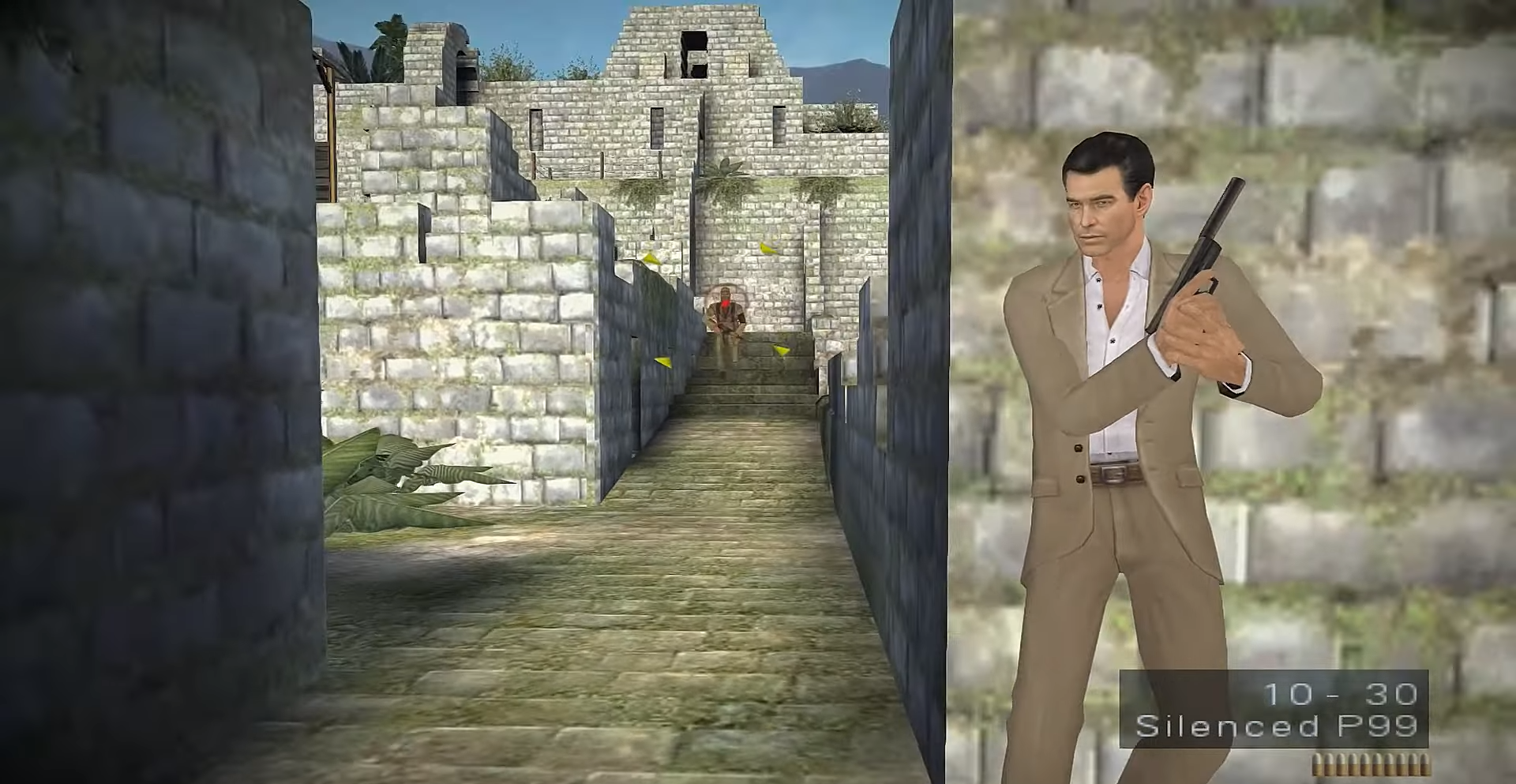
Pierce Brosnan’s final outing as 007 came in the form of Everything or Nothing, a mildly courageous thrillride that shook up the standard Bond game formula and delivered the truest translation of the films’ charming excess to the video game medium. Like the movies it is emulating, Everything or Nothing is littered with exotic locales, clever gadgets, sexy women, and cheesy one-liners. The shooting is still omnipresent, but the emphasis has changed. Most noticeably, it shifts the perspective from first-person to third-person, allowing Brosnan’s visage to feature prominently alongside his silky voice (the first time and only time he provided voice-acting for a game). Brosnan’s talents certainly help the game achieve the cinematic flair one associates with the best of the films, and he’s capably supported by a stellar cast of Hollywood talent that includes John Cleese, Judi Dench, Willem Dafoe, Shannon Elizabeth, Misaki Itô, and Heidi Klum. Popular singer Mýa (not the ‘Paper Planes’ chick—that’s M.I.A.) was commissioned to perform the game’s theme song and even features briefly in the game as a double agent.
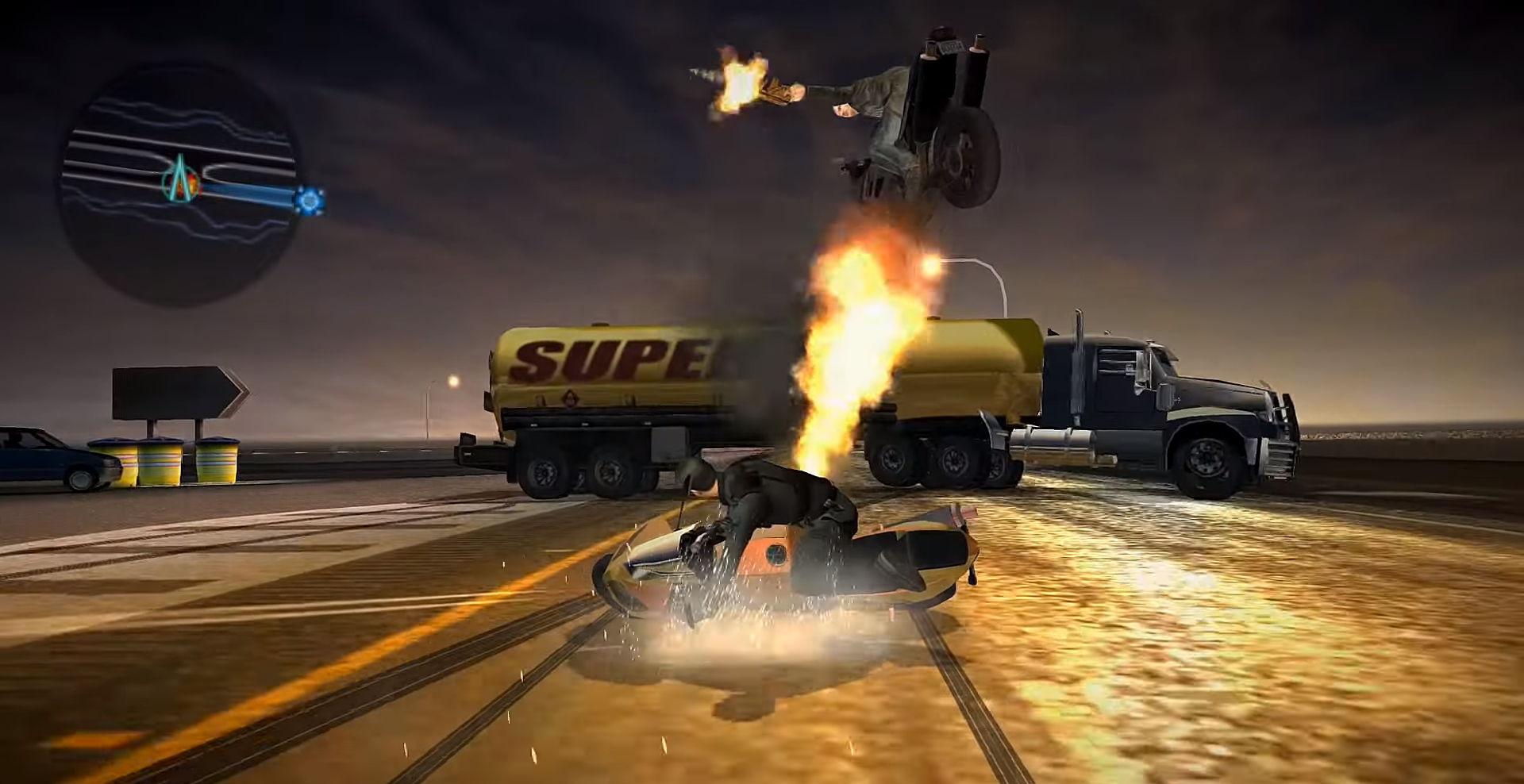
The particularly amazing thing about the simple shift to third-person is how effectively it links the player to the Bond avatar in a way that the first-person perspective didn’t. Of course, a lot of work went into making that change possible, much of which is detailed in Piotr Badja’s interview with lead Everything or Nothing designer Jason VandenBerghe. As VandenBerghe proudly states, his team made innovations that allow Bond to smoothly rappel up and down walls; they split the torso in two to give the player the freedom to run and aim in different directions; he even describes being blown away when one of his programmers introduced him to animation blending. All of these things were commonplace only a few years later, but few contemporary games looked quite as fluid in third-person action. The team also decided to move away from the common over-the-shoulder third-person perspective, allowing Bond’s entire body to be visible in the frame. This is crucial, especially when taking cover against a wall and in the stealth sections of the game where Bond’s silent takedowns take on a cinematic texture as the frame is somewhat decoupled from the character’s movements. That thrill holds pretty much across the board, whether shooting, taking cover, crouching in the shadows, driving cars, helicopters, motorcycles, and tanks (the team borrowed the Need for Speed engine), skydiving, rappelling—there’s no shortage of unique and fun things to do crammed into the movie-esque game. Although it gets overlooked as a licensed title, Everything or Nothing was at the vanguard of defining the cover-based third-person action genre, along with games like Splinter Cell, kill.switch, and Metal Gear Solid 2.
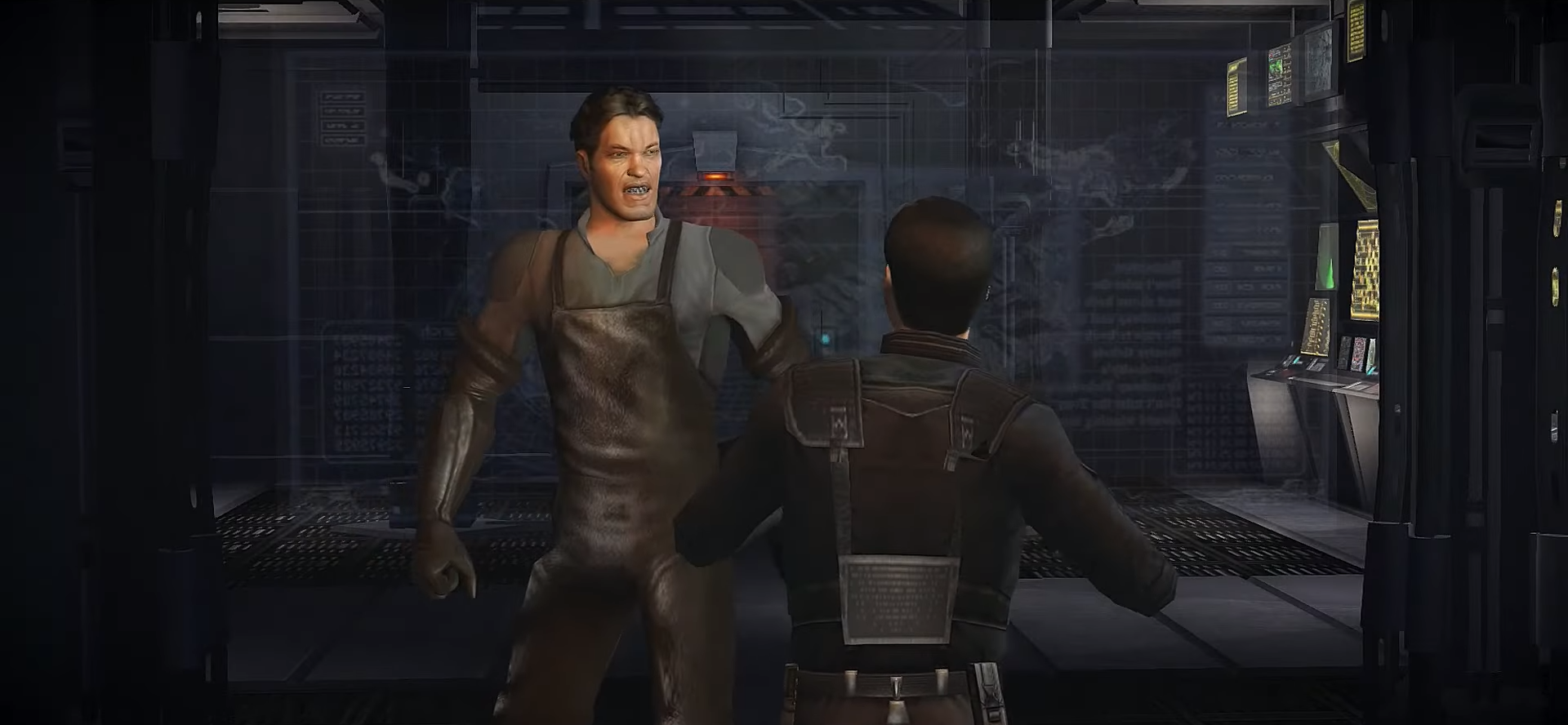
The story is outrageous in all the right ways, told in perfectly short cutscenes that stick around just long enough to propel the plot and allow Bond to insert a silly line here and there. It was written by Bruce Feirstein, screenwriter of the first three Brosnan era films. Suffice to say there are double agents, armored trains, nanobots, nightclubs, graveyards, missile silos, platinum tanks, villains with robotic hands. You also tangle with Jaws (Richard Kiel), who hadn’t been in a Bond film since Moonraker in 1979. You name it, Everything or Nothing has got it.
The rapid procession of memorable set pieces is truly something to behold, and somehow the tone never wavers from perfectly-tuned tongue-in-cheek action-movie bliss. This is a game in which you engage in a Mexican standoff with a missile-equipped fighter jet in the first level; a game that has you drive a motorcycle across rooftops and then ramp it through a waterfall; that lets you remotely control explosive mechanical spiders and use a prototype invisibility suit; that lets you choose between a missile-equipped Porsche or a missile-equipped dirt bike when you must chase down and board a moving train; that finds you skydiving off a cliff to save a falling Bond girl and saying “nice to catch up with you again” before shooting the salvific grappling hook into the cliffside; that has you track down a tanker truck brimming with liquid death on a Triumph Daytona 600 equipped with dual flamethrowers. I understand why EON decided to go in a gritty direction for the Daniel Craig era—that’s just where the culture at large was heading at the time. But the extravagant overindulgence of Everything or Nothing is unbeatable.

In any case, what the story amounts to is a perfect scaffolding to orchestrate set pieces with great frequency, most of which are actually played through instead of relegated to cutscenes. Though I’m potentially blinded by nostalgic bias, I find several of these levels to be a pure pleasure to play through time and again. Some of my favorites include the stealthy journey up through a series of train cars to meet with Jaws in An Old Friend; the infiltration of a cabaret in The Kiss Kiss Club; the pursuit of a rogue tanker going 200mph on a motorcycle in The Pontchartrain Bridge; the sneaky (or guns blazing) entrance into a fancy hotel to steal a racecar driver’s attire in A Simple Exchange; the lead-heavy companion mission after the race has been won, called Ambushed; and the hangar-full of shipping containers and guards with shotguns, rocket launchers, and sniper rifles that serves as the game’s finale, titled Everything or Nothing. I even found myself enjoying my time with The Machinery of Evil—a level which had befuddled my younger self and prevented me from finishing the final third of the game for several years (I had no idea what a walkthrough was in those days).
If there’s a minor flaw, it’s that the auto-aim, which is occasionally clunky but mostly enjoyable, sometimes whiffs when an enemy bum-rushes you. This can result in the player taking innumerable point blank rounds to the chest while firing their own gun off into the distance. But it’s a small quirk that becomes second nature to avoid after playing for a while. Overall, the level layouts, pesky enemy AI—mostly stupid, but capable of blindfiring and using a variety of guns and melee weapons—and intuitive Bond Moments provide a steady stream of pleasurable gameplay.
Everything or Nothing will never enjoy the reputation of GoldenEye, but with its high production values, star power, and smooth gameplay, it is seriously entertaining and better than many of the films.